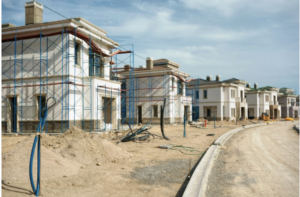(A market analysis from NAHB chief economist, Robert Dietz, which was originally published on NAHB.com)
 Rising interest rates and declining housing affordability are the primary culprits for the ongoing weakness for home sales and housing starts in recent months.
Rising interest rates and declining housing affordability are the primary culprits for the ongoing weakness for home sales and housing starts in recent months.
Since the start of 2022, the benchmark 10-year Treasury rate, which often moves in tandem with mortgage rates, has increased from 1.51% to approximately 3.7%. The average 30-year fixed mortgage interest rate, as measured by Freddie Mac, has increased even more, rising from 3.11% at the start of the year to 6.7%. Combined with higher construction costs and rising home prices, these market dynamics have pushed housing affordability to more than decade-lows.
Builder confidence in the single-family housing market has closely reflected deteriorating affordability conditions, falling for nine consecutive months as registered by the NAHB/Wells Fargo Housing Market Index (HMI).
With the NAHB economics team closely tracking housing market conditions, NAHB was ahead of the curve with other market analysts when in April we noted the single-family market faced an inflection point as interest rates increased. And in August, NAHB’s HMI reading led our economists to declare a “housing recession”—and other major news outlets and economists soon followed our lead when describing the weakening housing market.
Reasons for the rapid rise in rates
The economic drivers of these conditions are a nearly 40-year high for inflation, produced by too much COVID-era stimulus, supply chain issues and global market disruptions, including the Russian war against Ukraine. While the Federal Reserve is now aggressively tightening monetary policy, via higher short-term rates and balance sheet reductions of ultimately tens of billions of dollars worth of assets off its massive near-$9 trillion bond portfolio, it waited too long to act.
The central bank call last year that inflation was “transitory” was a forecasting error. Further exacerbating the situation was a failure at the local, state and national levels to properly and effectively address the supply side of the economy, where inflation can be more efficiently fought. With the Fed falling behind the inflation curve, its leadership has now adopted a stark, hawkish stance to convince markets that it is in the inflation fight to win.
As a result of the Fed’s aggressive monetary policy stance, interest rates have increased significantly in 2022 and particularly in recent weeks. Since the start of August, the 10-year Treasury rate has increased from 2.6% to approximately 3.7%. And as the bond market decline gathered speed this week (a falling bond market often means rising mortgage rates), the 10-year Treasury rate briefly increased above 4%, the highest rate in 15 years. Rates then fell back on global issues and a focus on macroeconomic weakness at the end of the week.
Additionally, mortgage interest rates have moved much higher because the spread between the 10-year Treasury and the 30-year fixed rate mortgage has expanded because of market uncertainty, mortgage pre-payment risk, and the Fed’s plan to allow for tens of billions of dollars of mortgage-backed securities each month to roll off its balance sheet.
The outlook moving forward
The consequences of this credit market are clear to builders. Buyers are priced out of the market, especially first-time buyers. Profit margins compressed by residential construction market costs are under pressure from the need to adjust pricing and incentives to attract buyers. And a housing market that needs more supply to address a significant, structural housing deficit of about 1 million homes has to put this long-run project on hold as real-time market demand, weakened by declining housing affordability, retreats.
Given this macro environment, 2022 will be the first year since 2011 to see a decline for single-family construction starts. The housing market, and other elements of the economy, are clearly slowing. The Fed, which many market observers now believe has adopted a stance that is too hawkish, should focus on the inflation data coming in the end of the year and slow its path of tightening to examine whether its policy is working to bring inflation down.
And other regulatory and fiscal policymakers should do what they can to reduce regulatory cost burdens and other ineffective rules that artificially increase the cost of remodeling homes, building apartments and supplying for-rent and for-sale housing to the market.
In the meantime, builders should continue to be cautious with respect to operations. The Fed has indicated that it plans to hold interest rates higher for longer. Unless a severe recession takes hold in 2023, interest rates are unlikely to ease until 2024. However, at that time, the housing market will rebound as interest rates fall back and a pool of frustrated, prospective home buyers comes back to the market in greater numbers. This means, unfortunately, the homeownership rate will decline in 2023, which places housing firmly on the political agenda heading into the 2024 elections.
